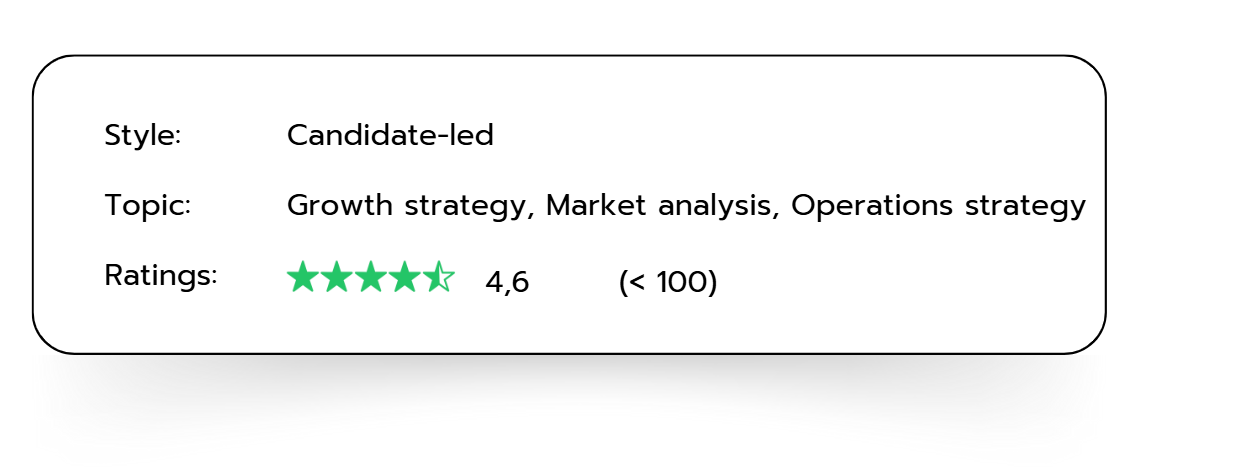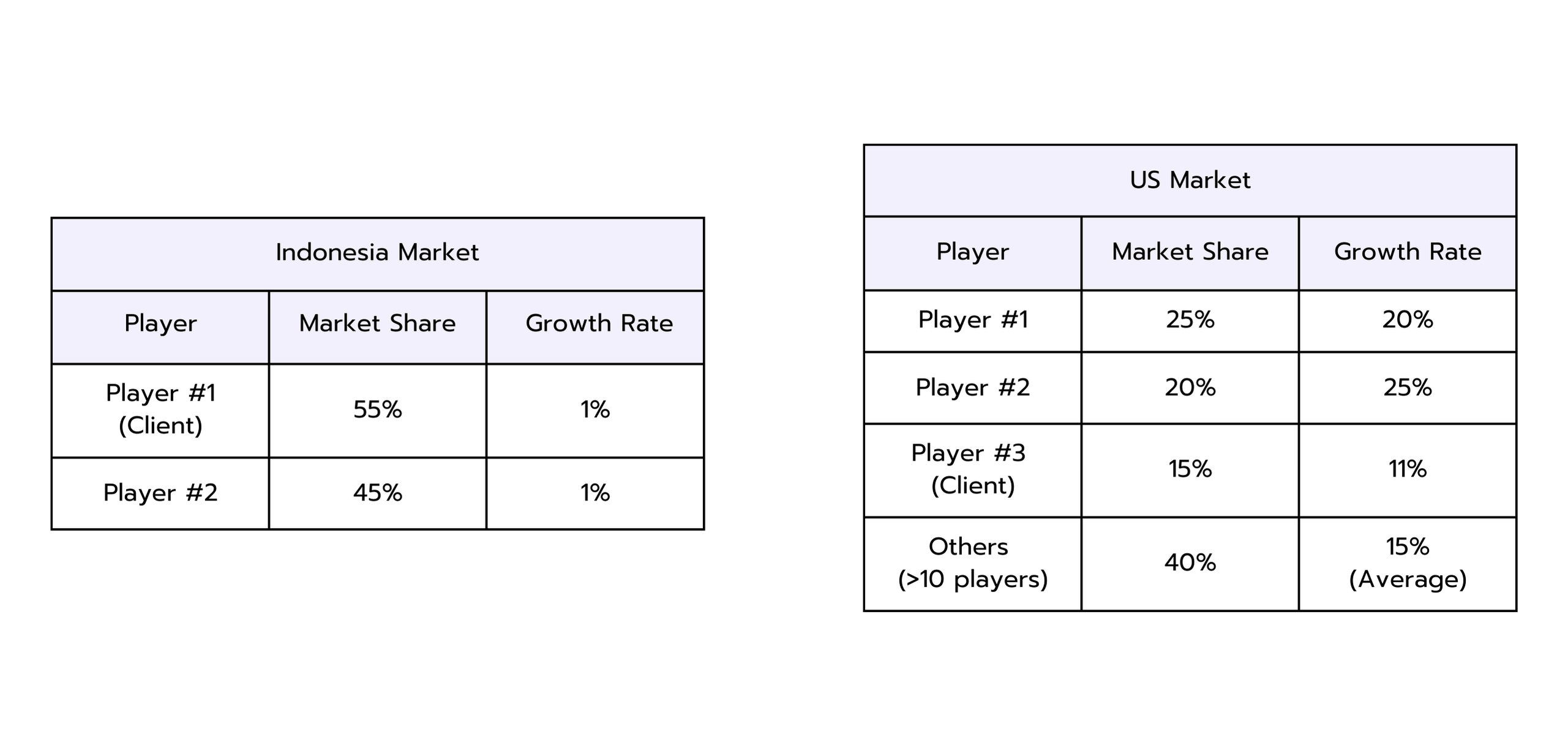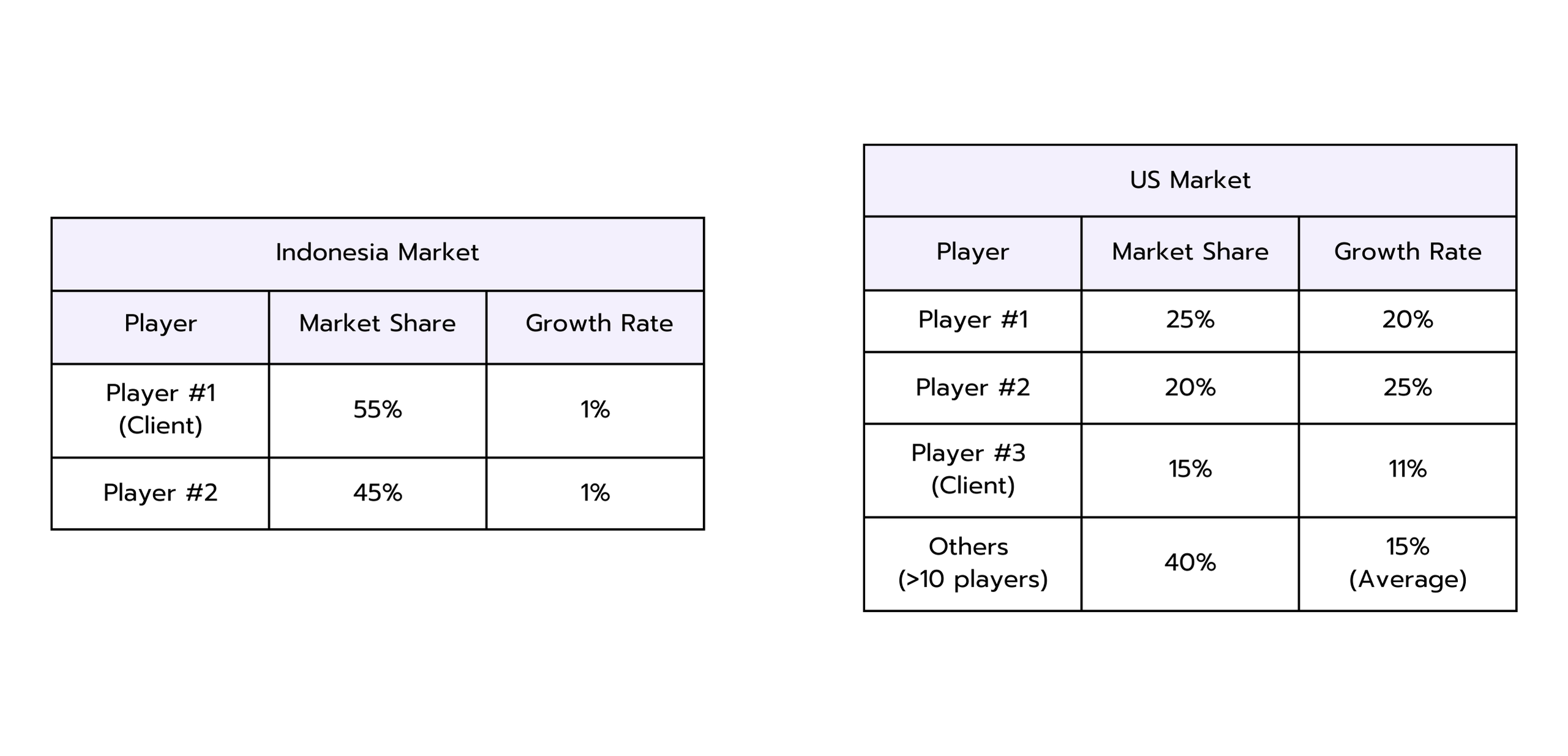Overseas Market Growth - 1st Round BCG Type

Case Prompt
ℹ️ This section is read by the interviewer to the candidate and defines the problem of the case.
The client is an Indonesian producer of paper boards which can be further processed into paper boxes, shopping bags, etc. They sell in both their domestic market i.e. Indonesia, and in the export market i.e. the US. Revenue last year was $5 billion, with 80% from Indonesia and 20% from the US. Overall they have been growing at 3% annually.
The client wants to achieve a 5% growth rate in the next 1-2 years. With the resource constraint they have, they want to focus on one of the two markets. They want to know which market they should go after to achieve that increase in growth rate, and how.


